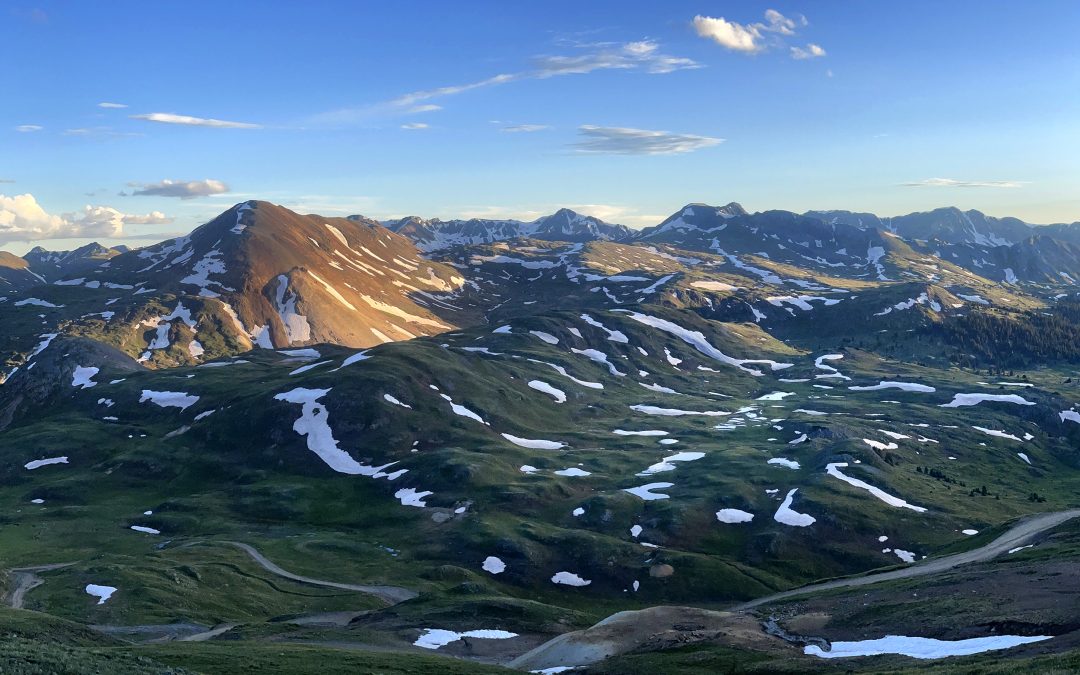Colorado has seen an average water year so far, but looking ahead, climate experts say much of the state could fall into drought conditions and struggle to find relief.
Colorado’s very average snowpack has officially melted away from all 115 federal snow monitoring stations in the state, as of this week. Reservoir levels are at 94%, just slightly below average, while precipitation was at exactly 100% of the 30-year median, according to a Water Conditions Monitoring Committee meeting Tuesday.
Heat, however, has been on the rise. Even summer showers may not be enough to combat its effects, or to keep the state away from drought.
“Really the entire state is at risk of developing drought this summer,” Assistant State Climatologist Becky Bolinger told listeners during the meeting. “A strong monsoon would be really helpful. It would limit that risk of worsening drought, particularly over the Four Corners. … For now, it’s looking like that is not as likely, and that it’s going to be a pretty rough summer.”
Climate experts track precipitation, temperature, soil moisture and other factors year-round to gauge water supplies and storage for farmers, city utility managers, reservoir operators and residents around the state.
This year’s outlook has some of those water users looking out for impacts to fish populations, recreation opportunities, irrigation supplies and wildfires.
“Without much rain, wildfire will definitely be a pretty serious concern,” said Adrian Bergere, executive director of the San Miguel Watershed Coalition in southwestern Colorado.
The period from October 2023 through May ranked in the top 10 warmest time periods across a significant majority of the state when compared with a 129-year historical record, Bolinger said.
Areas of southeastern Colorado, like Lamar and La Junta, have already reported 20 or more days over 90 degrees. The Front Range has already had 10-15 days over 90 degrees. Most of the country is also likely to be hotter than usual for the rest of the summer, she said.
That’s quite the switch after last year, which started out with cooler-than-average months, Bolinger said.
The hotter temperatures are likely to continue for the rest of the summer. Western Colorado and the Four Corners area have a 70%-80% chance of above-average temperatures — a very high degree of confidence, Bolinger said.
Colorado’s stream and river levels are receding after a normal runoff year, and incoming precipitation will be increasingly helpful for water users in the late summer and early fall. Although the state has seen average precipitation so far, there’s a 40%-50% chance rainfall will tumble below normal levels for July through September.
Some areas, like Fort Collins and Burlington, have seen less-than-average rainfall so far. Even with some rain in the near-term forecast for early July, it will be hard for these areas to end the water year, which closes Sept. 30, at the average level, Bolinger said.
The combination of hot and dry weather could make it harder for areas of the state that are already experiencing drought conditions to recover, and it could mean that more areas fall into drought, she said.
About 16% of the state is experiencing drought conditions. That is vastly better than in late 2020 and early 2021, when the entire state was in drought and over 20% was in the most severe drought category. At that level, agricultural and recreational economic losses are large, reservoirs are low, large fires can develop and mandatory water restrictions are often implemented, according to the U.S. Drought Monitor.
“There is a slightly increased risk for drier extremes in the southern part of the state, which really means there would be a low likelihood that any drought that worsens or develops in the summer is not going to see relief through the fall,” Bolinger said.
In the Upper Rio Grande River Basin, aquatic biologist Estevan Vigil is keeping an eye on the water temperatures and water levels on the Rio Grande and Conejos rivers for Colorado Parks and Wildlife.
Brown trout and rainbow trout flourish when water is about 50 degrees but struggle when it rises above 70 degrees. At that level, their immune systems become stressed, and catch-and-release fishing can lead to higher fish mortality.
If stream levels fall below 50% of the norm, and if temperatures rise above 70 degrees, Vigil may implement voluntary or emergency fishing closures.
“In the [San Luis Valley] since 2019, we’ve probably done it twice,” Vigil said. “I’m anticipating having to do it this year.”
A strong monsoon season would help keep rivers flowing and fishing access open, he said.
Several city water managers said their reservoir storage supplies were looking good during the water conditions meeting. Colorado Springs Utilities reservoirs were at 85% of their capacity, and Denver Water’s reservoirs were 97% full.
The lack of monsoons would heighten concerns over wildfire risk or lead to a shorter rafting season for boaters, Bergere said. Less-than-average rainfall could also leave sections of the river dry as water gets pulled for other uses, like irrigation and municipal supplies.
Water users in the San Miguel River Basin know how to endure fluctuating supplies, Bergere said.
“What we’re looking at there is not amazing, but it’s something we’re pretty used to down here,” he said. “Without much rain, wildfire will definitely be a pretty serious concern.”



 Print
Print